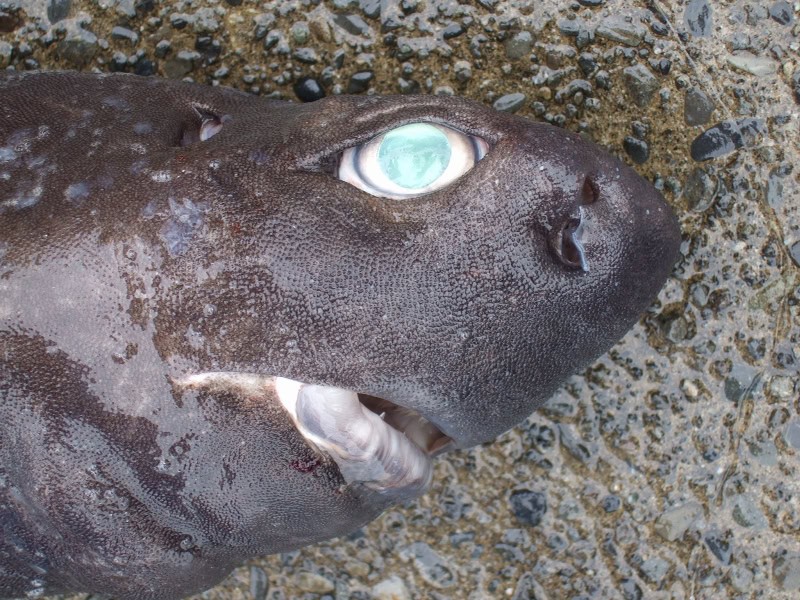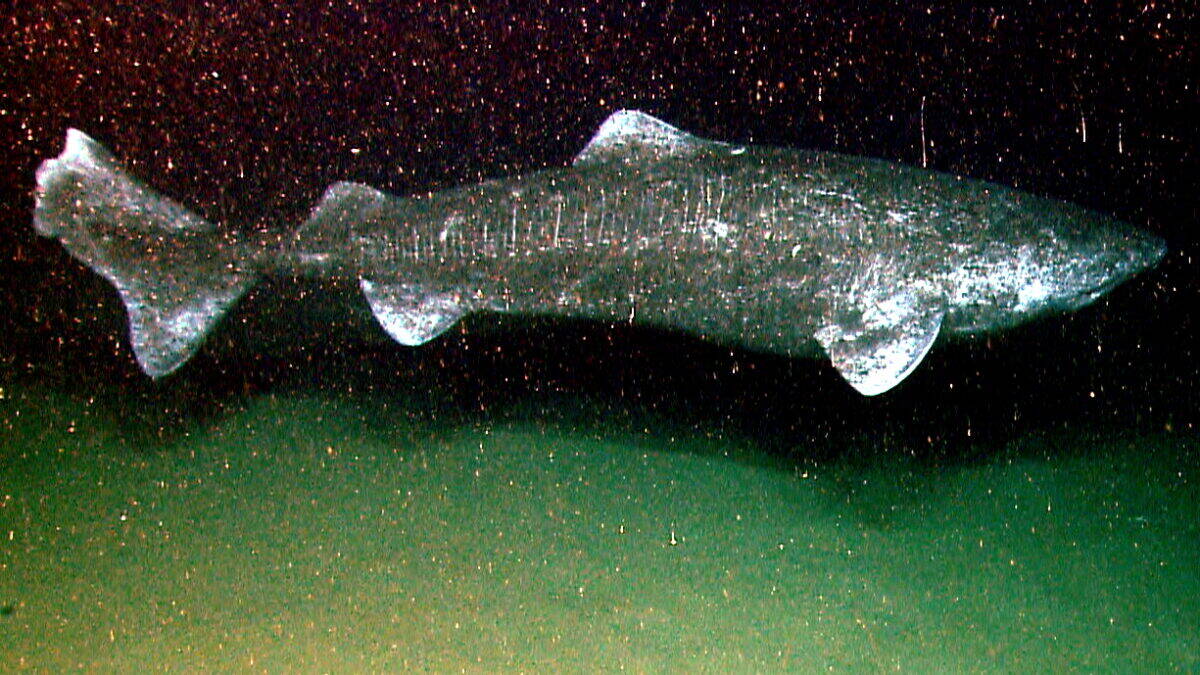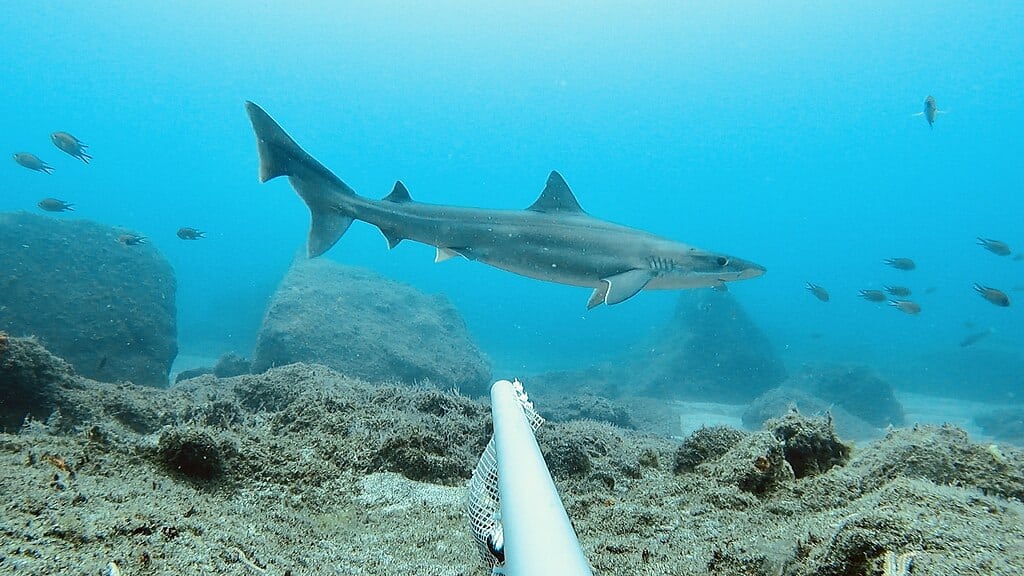In the vast, mysterious realm of the deep ocean, where pressure would crush most living creatures and darkness reigns supreme, a select group of sharks has evolved extraordinary adaptations that allow them to not just survive but thrive in these extreme environments. These deep-sea specialists represent some of the most fascinating examples of evolutionary adaptation on our planet. From specialized metabolisms to unique body compositions and remarkable sensory systems, deep-dwelling sharks showcase nature’s incredible resilience and adaptability. This article explores the remarkable world of deep-sea sharks and the astonishing biological innovations that enable them to conquer the crushing depths of our world’s oceans.
The Crushing Reality of Deep Ocean Environments

The deep ocean is one of Earth’s most hostile environments. For every 10 meters of descent, pressure increases by approximately one atmosphere (14.7 pounds per square inch). At depths where many deep-sea sharks live—between 1,000 and 3,000 meters—the pressure ranges from 100 to 300 times that at sea level. These crushing forces would implode most air-filled structures and render normal cellular processes impossible for surface-dwelling organisms. Additionally, these depths exist in perpetual darkness, with temperatures hovering just above freezing, and oxygen levels significantly lower than in surface waters. To survive in this extreme environment, deep-sea sharks have developed specialized adaptations unlike any seen in their shallow-water relatives.
Champions of the Deep: Notable Deep-Sea Shark Species

Several shark species have mastered the art of deep-sea living. The Portuguese dogfish (Centroscymnus coelolepis) routinely swims at depths exceeding 3,700 meters. The frilled shark (Chlamydoselachus anguineus), with its prehistoric appearance, inhabits depths between 500 and 1,500 meters. The bizarre-looking goblin shark (Mitsukurina owstoni) has been found at depths of 1,300 meters, while the Greenland shark (Somniosus microcephalus) has been recorded at depths of 2,200 meters beneath Arctic ice. Perhaps most impressive is the Pacific sleeper shark (Somniosus pacificus), which has been documented at the astonishing depth of 9,000 meters in the Mariana Trench, making it one of the deepest-living vertebrates on Earth. These remarkable species represent evolution’s answer to the challenges of deep-ocean living.
Pressure-Resistant Body Compositions

Deep-sea sharks possess fundamentally different body compositions compared to their shallow-water counterparts. While most sharks rely on a liver filled with buoyant oil (squalene) for buoyancy, deep-sea species have evolved specialized liver oils that remain liquid even under extreme pressure. Their bodily tissues contain high concentrations of trimethylamine N-oxide (TMAO) and other osmolytes that stabilize proteins against pressure-induced denaturation. Their cell membranes incorporate unique phospholipids with unsaturated fatty acids that maintain fluidity at high pressures and low temperatures. Perhaps most importantly, deep-sea sharks lack gas-filled swim bladders entirely, instead relying on oil-filled livers and cartilaginous skeletons that aren’t susceptible to pressure compression. Their bodies are essentially “pre-compressed,” allowing them to function normally under conditions that would be lethal to most vertebrates.
Ultra-Efficient Metabolic Adaptations

Life in the deep ocean requires extraordinary metabolic efficiency. Food is scarce, and the energy expended hunting must be carefully balanced against calories consumed. Deep-sea sharks have evolved remarkably slow metabolisms, with some species reducing their energy requirements to just 10% of what similar-sized surface sharks require. The Greenland shark epitomizes this adaptation with an extremely slow growth rate—gaining only about 1 centimeter per year—and an astonishing lifespan exceeding 400 years. Deep-dwelling sharks also maintain lower body temperatures than surface species, further reducing their metabolic demands. Their enzyme systems function optimally at high pressures and low temperatures, conditions that would render the metabolic processes of surface animals inoperative. These adaptations allow them to survive in an environment where meals might be weeks or months apart.
Specialized Sensory Systems for Perpetual Darkness

In the eternal darkness of the deep sea, vision becomes secondary to other senses. Deep-sea sharks have evolved extraordinarily large eyes with specialized rod cells containing visual pigments tuned to detect the faint blue-green wavelengths that penetrate deepest into the ocean. Many species possess enlarged olfactory bulbs, allowing them to detect minute concentrations of scent molecules over vast distances. Their electroreception abilities, centered in the ampullae of Lorenzini, are among the most sensitive in the animal kingdom, capable of detecting the electrical impulses from a prey animal’s beating heart or muscle contractions from considerable distances. The lateral line system, which detects pressure changes and movement in the water, extends into elaborate networks covering their bodies. Some deep-sea sharks, like the kitefin shark, have even evolved bioluminescent capabilities, using light-producing photophores to communicate, attract prey, or camouflage their silhouettes against the faint light from above.
Structural Adaptations to Withstand Pressure

The skeletal structure of deep-sea sharks represents a masterpiece of evolutionary engineering. Unlike bony fish, sharks possess cartilaginous skeletons that provide flexibility while maintaining structural integrity under extreme pressure. Deep-dwelling species have further specialized this feature with reinforced vertebral columns and cranial structures that resist compression. Their skin, comprised of dermal denticles (modified scales), is denser and more closely packed than in shallow-water relatives, providing additional structural support without adding significant weight. Fascinatingly, the goblin shark possesses specialized jaw ligaments that allow its jaws to project forward explosively to capture prey, a mechanism that functions perfectly despite the crushing ambient pressure. These structural adaptations enable deep-sea sharks to maintain normal movement and hunting behaviors at depths that would physically incapacitate most vertebrates.
The Remarkable Squalene Connection

Central to the deep-sea shark’s ability to maintain buoyancy at extreme depths is a unique compound called squalene. Unlike the swim bladders used by bony fish, which would collapse under deep-sea pressures, sharks rely on their enormous oil-filled livers for buoyancy. Deep-sea species have livers that can constitute up to 30% of their total body weight, compared to 5-10% in surface-dwelling sharks. What makes deep-sea shark liver oil special is its high concentration of squalene, a hydrocarbon that remains liquid and buoyant even under extreme pressure. This oil has a lower density than seawater, providing lift regardless of depth. Scientific analysis of Portuguese dogfish liver oil, for example, shows squalene concentrations up to 80%, compared to 25% in shallow-water sharks. This remarkable adaptation allows deep-dwelling sharks to maintain neutral buoyancy with minimal energy expenditure, a crucial advantage in their food-scarce environment.
Reproductive Strategies in the Abyss

Reproducing successfully in the deep ocean presents unique challenges that have driven the evolution of specialized reproductive strategies. Many deep-sea sharks are ovoviviparous, meaning embryos develop inside eggs that remain within the mother’s body until they hatch. This offers protection from the extreme environment and predators. Deep-dwelling species typically produce fewer offspring than their shallow-water relatives—often just 2-10 pups per gestation—but invest more energy in each, producing larger, more developed young. Gestation periods are extraordinarily long, with the Greenland shark believed to have a pregnancy lasting over 8-14 years. Some species, like the Portuguese dogfish, exhibit “lecithotrophic viviparity,” where embryos rely solely on their yolk sacs for nutrition, eliminating the need for the mother to feed them during development. These reproductive adaptations ensure that each pup has the maximum chance of survival in one of Earth’s most challenging habitats.
Feeding Adaptations in a Food-Scarce Environment

The deep ocean is characterized by food scarcity, with biomass decreasing exponentially with depth. Deep-sea sharks have evolved diverse feeding strategies to cope with this limitation. Many species are opportunistic scavengers, with powerful jaws and teeth designed to tear chunks from larger carcasses that sink from above. The Greenland shark is known to feed on sleeping seals and even reindeer that fall through ice. Others are ambush predators with specialized dentition; the frilled shark’s 300+ needle-like teeth arranged in 25 rows create a trap from which prey cannot escape. Some deep-sea sharks have developed distensible jaws and stomachs that allow them to consume prey larger than themselves—a crucial adaptation when meals are unpredictable. The cookie-cutter shark employs a unique parasitic strategy, using its specialized jaw to remove circular chunks of flesh from larger animals without killing them. These diverse feeding adaptations reflect the evolutionary pressure to maximize caloric intake in an environment where the next meal might be weeks or months away.
Extreme Longevity and Slow Growth

Perhaps the most astonishing adaptation of deep-sea sharks is their extraordinary longevity. The Greenland shark holds the record as the longest-living vertebrate, with some individuals estimated to be over 400 years old based on radiocarbon dating of eye lens nuclei. This extreme lifespan correlates with their remarkably slow growth rates—just 0.5-1 cm per year—and delayed sexual maturity, with females not reproducing until they’re 150+ years old. The biological mechanisms behind this longevity appear connected to their slow metabolism, efficient DNA repair mechanisms, and reduced oxidative stress due to their cold, low-oxygen environment. Their cells show enhanced expression of stress resistance genes and specialized proteostasis networks that prevent protein misfolding under pressure. These adaptations not only allow deep-sea sharks to thrive in their challenging environment but have made them subjects of intense scientific interest for aging research, as they appear immune to many of the degenerative processes that limit lifespan in other vertebrates.
Threats to Deep Ocean Shark Populations

Despite evolving to survive in one of Earth’s most extreme environments, deep-sea sharks face growing threats from human activities. Deep-sea trawling, which drags heavy nets across the ocean floor, directly impacts shark populations and destroys their habitat. Many deep-dwelling species are targeted for their liver oil, rich in squalene, which is used in cosmetics, pharmaceuticals, and as a vaccine adjuvant. The extremely slow reproductive rate of these sharks—with some species taking over a century to reach sexual maturity—makes them particularly vulnerable to overfishing. Once depleted, population recovery could take centuries. Climate change poses additional threats through ocean acidification, changing deep-sea currents, and shifting oxygen levels. The Portuguese dogfish population has declined by an estimated 80-95% in the Northeast Atlantic since the 1990s, demonstrating the vulnerability of these remarkable animals. Conservation efforts are hampered by limited scientific knowledge and the challenges of monitoring and managing fisheries in international waters thousands of meters below the surface.
Current Research and Scientific Discoveries

Scientific exploration of deep-sea sharks represents one of the most exciting frontiers in marine biology. Recent technological advances in deep-sea submersibles, autonomous underwater vehicles, and environmental DNA (eDNA) sampling are revealing new species and behaviors previously unknown to science. A 2020 study published in Science documented the presence of six previously unknown species of deep-sea sharks in the hadal zone (below 6,000 meters). Research into the pressure-resistant properties of deep-sea shark proteins has applications in biotechnology, including the development of pressure-stable enzymes for industrial processes. Their extreme longevity has attracted attention from aging researchers studying their telomere maintenance and DNA repair mechanisms. Shark liver oil compounds are being investigated for anti-cancer properties, while their unique cartilage structure is informing biomechanical engineering. Recent deep-sea expeditions have captured the first-ever footage of several species in their natural habitats, including the ghost shark and megamouth shark, providing invaluable insights into their ecology and behavior. These ongoing discoveries highlight how much remains to be learned about these remarkable deep-ocean specialists.
Deep-sea sharks represent one of nature’s most extraordinary evolutionary success stories, conquering an environment that seems designed to prohibit complex life. Their specialized body compositions, remarkable sensory systems, efficient metabolism, and pressure-resistant structures have allowed them to thrive where few vertebrates dare venture. These adaptations have not come without trade-offs—their extremely slow growth rates and reproduction make them vulnerable to human exploitation in ways surface-dwelling species are not. As we continue exploring the ocean depths, these remarkable predators serve as ambassadors from a world few humans will ever witness firsthand. The ongoing scientific study of deep-sea sharks not only expands our understanding of biological adaptation but also highlights the urgent need for conservation measures to protect these ancient mariners of the abyss, ensuring they continue their evolutionary journey in Earth’s last great frontier.
- The Most Dedicated Mothers in the Animal Kingdom - August 18, 2025
- The Largest Hailstones Ever Recorded in the US—And Their Impact - August 17, 2025
- Koalas Sleep More Than Sloths - August 17, 2025

